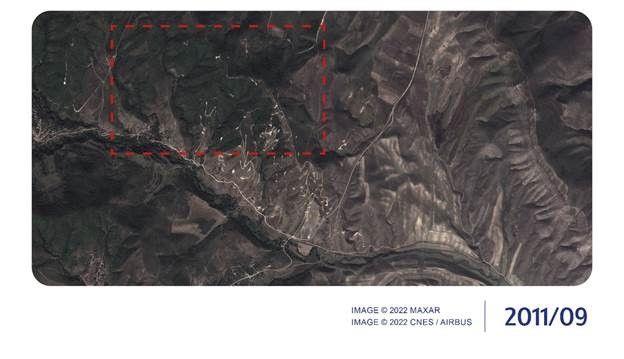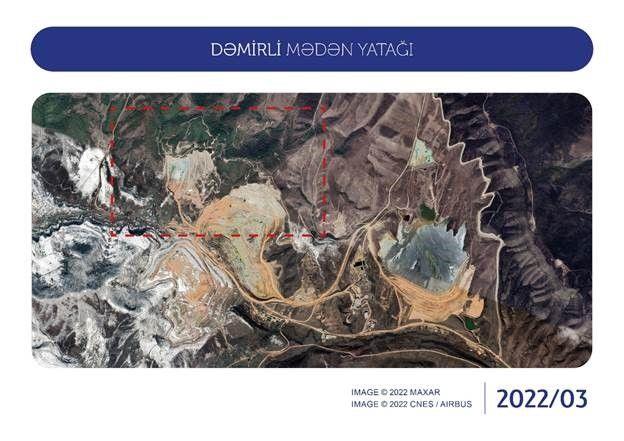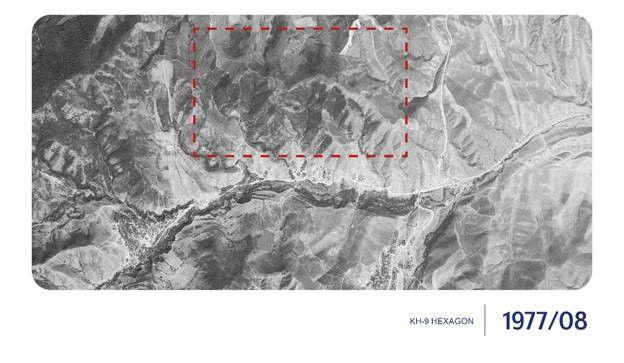The protest action initiated by Azerbaijani
environmentalists, representatives of non-governmental
organizations, public activists and volunteers demanding an end to
the illegal exploitation of Azerbaijan's natural resources and
monitoring of the“Gizilbulag” gold and“Damirli” copper-molybdenum
deposits has been going on for five days now. Unfortunately, the
discussions the monitoring group, which is expected to investigate
the illegal exploitation of mineral deposits in the areas where
Russian peacekeepers are temporarily stationed, held with the
command of the peacekeeping contingent on 3 and 7 December have not
yet yielded any results. Despite the demands of environmental
activists, conditions for the monitoring to go ahead have not been
provided yet. It has been announced that the monitoring did not
take place today as a result of yet another provocation. The
illegal exploitation of“Gizilbulag” and“Damirli” mineral deposits
has been topping the country's agenda since the first days of
December.
azertac is publishing a research by Sabuhi
Huseynov, researcher at the Strategic Communication Center, senior
specialist of the Institute of History of the Azerbaijan National
Academy of Sciences.
The development of the“Damirli” (Armenians call it Kashen –
ed.) mineral deposit was started by“Base Metals” JSC, a subsidiary
of“Vallex” group of companies, in 2012. The copper-molybdenum ore
obtained at the initial stage was taken to an enrichment plant
located at the Gizilbulag deposit and processed there. The
construction of“Damirli” mining complex commenced in April 2014.
After only a year and nine months, the mining complex with an
initial processing capacity of approximately 2 million tons of ore
per year was commissioned.
Throughout the period of illegal operation, the company managers
and political circles of Armenia attempted to portray their work as
a lawful undertaking, pledging at early stages that the
exploitation of the deposit would not have any environmental
implications. In addition, the development of the field was
concealed from the international community and environmental
organizations.
The fact of the matter is that the site of the deposit was very
rich both from a natural and historical perspective. This part of
Karabakh had fascinating nature and forests. There were hundreds of
historical and architectural sites belonging to the Azerbaijani
people in several villages located and around the deposits. Many of
these sites were ancient cemeteries, castles, churches, palaces,
etc. related to Caucasian Albania.
However, while engaging in illegal construction and mining
activities in the area in an effort to start production as soon as
possible, the company disrupted the natural and historical
environment of the area and destroyed all our of its historical,
architectural and archeological sites. As if this wasn't enough,
out of more than 850 hectares of land on which the“Damirli” mining
complex is located, an area of about 82 hectares of forests, which
included some of the most wonderful species of Karabakh trees, was
razed to the ground. The political authorities of Armenia somehow
managed to conceal this environmental tragedy and the savage
destruction of cultural sites from the world.
In fact, the monitoring system of the“Global Forest Watch”
organization shows that this environmental tragedy had resulted in
the loss of only three hectares of forest cover for some reason. It
seems that“Base Metals” and the breakaway regime managed not only
to deceive ordinary Armenians living in Karabakh, but also to do
that unbeknownst to international organizations.
This investigation reveals evidence of barbarism committed
during the construction and development of the“Damirli” deposit.
To do this, the historical-natural environment of the area was
recreated in the Geographical Information System and a comparative
analysis of the current situation carried out.
Investigation method – remote sensing
In modern times, remote sensing, especially the analysis of
satellite imagery, is highly instrumental in documenting
archaeological sites and conducting effective and successful
research. Satellite images have recently become a reliable tool for
documenting ecological, historical, historical and archaeological,
monumental and other sites. The key advantage of this technique is
that the researcher gets the opportunity to analyze the area where
the site is located without actually visiting it. This
investigation uses declassified American satellite images of
1977-1980, detailed maps developed by Soviet topographers, and
topographic maps of the General Staff of the Soviet Union published
in 1989.
The artificial satellites series known as the Hexagon program
consisted of 20 reconnaissance satellites launched by the United
States during the Cold War from 1972 to 1986. The satellites were
sent into space to provide the United States with high-resolution
images of the Earth, in particular to monitor the development of
strategic weapons technologies in the USSR after the agreement on
the limitation of anti-missile defense systems.
From 1979 to 1986, twenty reconnaissance satellites included in
the program took pictures of almost every location of the Earth
(including the territory of Karabakh). The satellite images provide
information about the condition of any location on Planet Earth 30
or 40 years ago. The images are now stored in a special archive of
the US Department of the Interior's Geological Service. They
contain scientific information on the state of natural resources,
which is then monitored and analyzed. The Geological Service's
Earth Resources Observation and Science (EROS) Center is a data
provider with a total of 29,000 scanned and declassified negatives
of KH-9 satellite images. This study uses images of the Earth's
locations captured by the KH-9 satellite as part of the Hexagon
program.
Damage caused to the
natural environment of the area during the construction of the
“Damirli” mineral complex Prior to the analysis, certain facts that surfaced in the
Armenian media during the years of illegal exploitation of the
“Damirli” deposit were also examined. In 2012, Armenian media
outlet“Heqt.am” published an article on the results of an
investigation by journalist Hayk Ghazaryan,“What is in store for
the sites located in the territory of the Kashen (Damirli)
deposit?”. When the construction of the mine was initiated, both
“Base Metals” and the leaders of the breakaway regime were stating
that there were no forests in the area. However, the Armenian
journalist wrote in his article that this wasn't the case. The
article also stated that there were 2,500 monuments and tombstones
in the area. When the matter surfaced in the media, the management
of“Base Metals” promised that it would relocate the monuments.
Therefore, we managed to calculate the area of the forest cover
as shown on a 1989 map of the area where the“Damirli” mineral
complex was built by integrating the military-topographic maps of
the Geographical Information System into the WGS-8 coordinate
system. It is an area of 280 hectares.
Then the forest area identified on the map was also confirmed by
the images taken by the KH-9 satellite on 22 August 1977. A spatial
analysis of the forest cover in the area was carried out in the
Geographic Information System with reference to both pieces of
evidence. If we compare the satellite images of the time when the
mine was built with those of the modern era, we will see that“Base
Metals” destroyed 82 hectares of forest in 2012-2015.
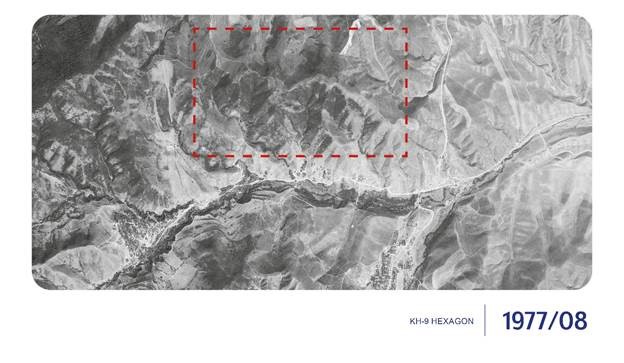
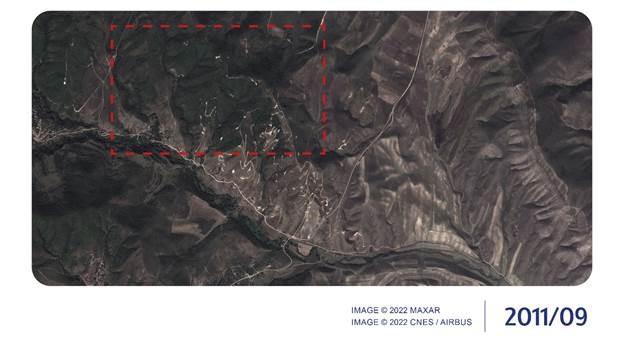

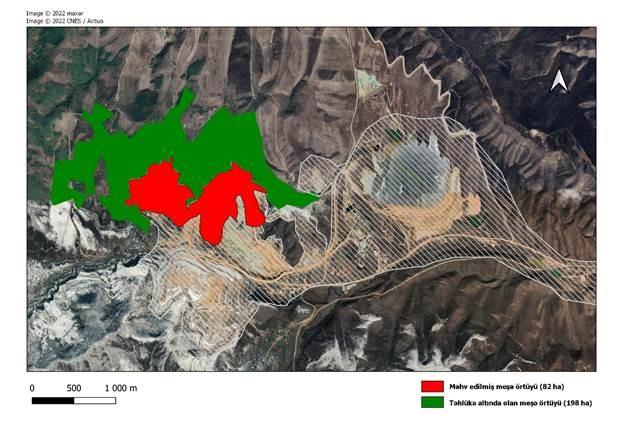
Vandalism unleashed
against Azerbaijan's material and cultural sites during the construction of the
“Damirli” complex The results of the investigation
explicitly show that both environmental and material-cultural
heritage in the area has been destroyed. This crime was hidden both
from the press and international organizations. We appeal to
international organizations and tribunals with authority to make
decisions on the preservation of the material and cultural heritage
of the Azerbaijani people, as well as the cultural heritage of the
world. The evidence provided represents an act of culturcide, the
systematic destruction of the cultural heritage of people who have
lived in the region for centuries. Each of these facts is
documented by artificial satellite imagery. These crimes were
perpetrated as a result of the joint activity of the Republic of
Armenia, the breakaway regime in Karabakh and“Base Metals”. The
material and cultural heritage, as well as the natural resources of
the Azerbaijani people, were intentionally destroyed and looted.
The revealed facts once again confirm the importance of
establishing a monitoring group of representatives of the Ministry
of Culture of Azerbaijan, scientists and experts to carry out
inspections in the area together with environmentalists.
At issue is the destruction of more than 2,500 material and
cultural sites on an area of more than 850 hectares we have already
examined. These include the fortress of Melik Allahverdi, the Melik
of the Cross, the fortress of Melik Israel, churches and other
architectural monuments that are relics of the Albanian era, and
hundreds of cross stones. The cross stones were Christian monuments
belonging to Caucasian Albania and the Melik of the Cross of the
later period.
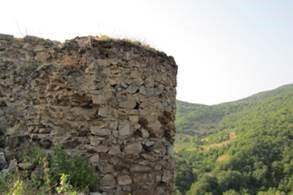
Fortress of Melik Allahverdi, the Melik of the
Cross
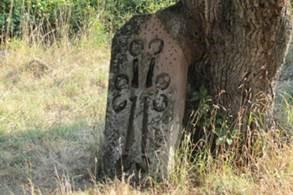
Albanian grave in Gulyataq village
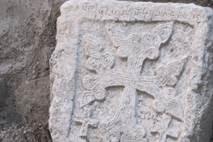
Albanian grave in Janyatag village
There is sufficient evidence in the scientific literature and
archive documents on the resettlement of the Armenian population to
Janyatag and Gulyatag villages after 1828. The areas populated by
Armenians were rich in ancient monuments of Caucasian Albania. Some
of them are archaeological sites. Archaeological excavations in the
village of Gulyatag, where the mineral deposit was established,
began as early as 1896. Back then, the Moscow Archaeological
Society seconded a certain A. Ivanovsky to the South Caucasus. He
conducted archaeological excavations in several locations around
Karabakh, including burial mound No. 81 in the village of Gulyatag.
The diameter of the mound was more than 40 meters. The report on
these archaeological excavations is known to a number of
archaeologists working in the region. At that time, A. Ivanovsky
wrote that there were many burial mounds in the territories of
Janyatag and Gulyatag villages. The material and cultural evidence
he discovered made a significant contribution to further
archeological research of the South Caucasus.
Armenian scientists who conducted research in the village of
Gulyatag acknowledged that Melik Allahverdi's castle was located in
the village. The castle was 34 meters long and 14 meters wide.
There were medieval ruins 4 kilometers southwest of the village. In
addition, there was a cemetery nearby rich in ancient tombstones
belonging to Caucasian Albania.
There were six such monuments in the village of Janyatag, which
is famous for its anthropomorphic sculptures of Karabakh. This was
established as a result of a research conducted in 1964-1987.
However, the stone monuments then mysteriously disappeared. Their
fate still remains unknown. In 1973, the number of monuments in the
villages of Janyatag, Mollalar and Shafibayli reached 10.
There was a place in Gulyatag village where Karabakh horses were
kept at the time of Tsarist Russia. The fate of this historical
site also remains unknown.
In 2012, a journalist of Armenian publication“Hetq.am” wrote in
his article:“It is not clear why historians of“Artsakh”, who have
yet to express an opinion on this situation, remain silent.” The
company, which stated during the construction of the mine that the
monuments would be moved to a different location, then simply
destroyed them secretly under the mine. As a matter of fact, it was
not possible to move those monuments to a different location.
----
Follow us on Twitter @AzerNewsAz

